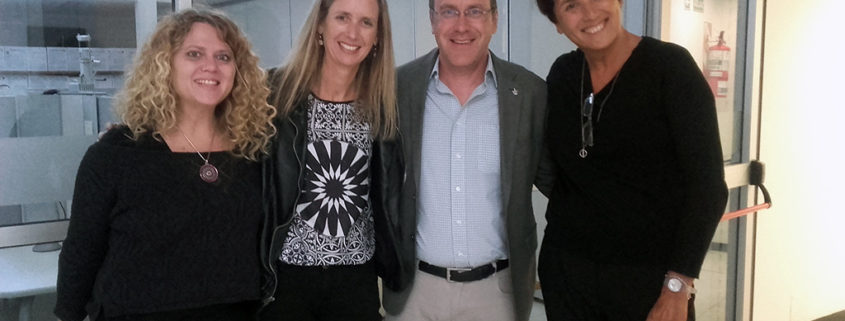Resumen Jornada SAB & Amigos Universidad de Tel Aviv Argentina
JORNADA SAB & AMIGOS UNIVERSIDAD DE TEL AVIV ARGENTINA
-1 DE JUNIO DE 2016-
BIBLIOTECA IBYME
VUELTA DE OBLIGADO 2490-CABA, 15.30-18 H.
ONCOGENE-INDUCED PLASTICITY AND CANCER STEM CELLS IN GLIOBLASTOMA
Dinorah Friedmann-Morvinski
Department of Biochemistry and Molecular Biology
The George S. Wise Faculty of Life Sciences
Sagol School of Neuroscience
Tel Aviv University
Glioblastomas are the most common and lethal form of intracranial tumors. In the last century we have accumulated tremendous amounts of data on this type of cancer, but we have achieved very little improvement in its treatment. This inadequate progress led us to reexamine the gliomagenesis theory and reconsider the cell of origin of this deadly disease. We developed a mouse glioma model using Cre-inducible lentiviral vectors that faithfully recapitulate the pathophysiology of human glioblastoma multiforme (GBM). I will present results that show that either mature astrocytes or neurons can be reprogrammed by the introduction of oncogenes/tumor suppressors to form cancer progenitor/stem like-cells that can give rise to all the cell lineages and heterogeneity observed in GBM.
Indole-3carbinol: A link between herbivory, auxin signaling and autophagy
Prof. Danny Chamovitz, Ph.D
Dean, George S. Wise Faculty of Life Sciences
Director, Manna Center for Plant Biosciences
Tel-Aviv University
The glucosinolate breakdown product indole-3-carbinol functions in cruciferous vegetables as a protective agent against foraging insects. While the toxic and deterrent effects of glucosinolate breakdown on herbivores and pathogens have been studied extensively, the secondary responses that are induced in the plant by indole-3-carbinol remain relatively uninvestigated. Here we show that indole-3-carbinol plays a role in influencing plant growth and development by manipulating auxin signaling. The results indicate that chemicals whose production is induced by herbivory, such as indole-3-carbinol, function not only to repel herbivores, but also as signaling molecules that directly compete with auxin to fine tune plant growth and development.





